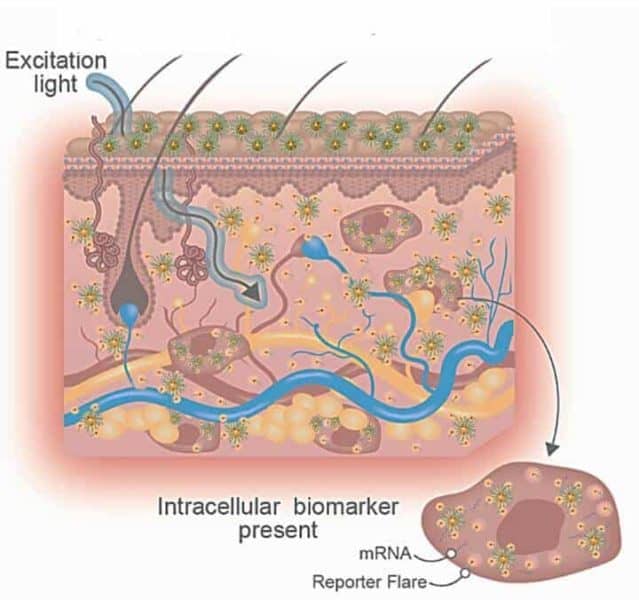In a new SLAS Technology auto-commentary, two authors of an article recently published in Nature Biomedical Engineering (Abnormal Scar Identification with Spherical Nucleic Acid Technology) share more insight into their unique method for skin disease diagnosis using NanoFlare nanotechnology. In particular, the authors address point-of-care diagnosis and image acquisition, which are the primary bottlenecks in efficient disease diagnosis.
Authors David Yeo, Ph.D., and Prof. Chenjie Xu, Ph.D., of the School of Chemical and Biomedical Engineering at Nanyang Technological University (Singapore) use NanoFlare to enable biopsy-free disease diagnosis and progression monitoring in response to therapy. It is a minimally-invasive, self-applied alternative that can reduce scarring and infection risks; improve accessibility to disease diagnosis; provide timely feedback of treatment efficacy; and reduce healthcare personnel time and attention, hence the overall healthcare burden.
This vision of simplifying disease diagnosis using topically-applied nanotechnology could change the way skin diseases such as abnormal scars are diagnosed and managed.
Simplifying Skin Disease Diagnosis with Topical Nanotechnology can be accessed for free for a limited time at http://journals.
If our reporting has informed or inspired you, please consider making a donation. Every contribution, no matter the size, empowers us to continue delivering accurate, engaging, and trustworthy science and medical news. Independent journalism requires time, effort, and resources—your support ensures we can keep uncovering the stories that matter most to you.
Join us in making knowledge accessible and impactful. Thank you for standing with us!

